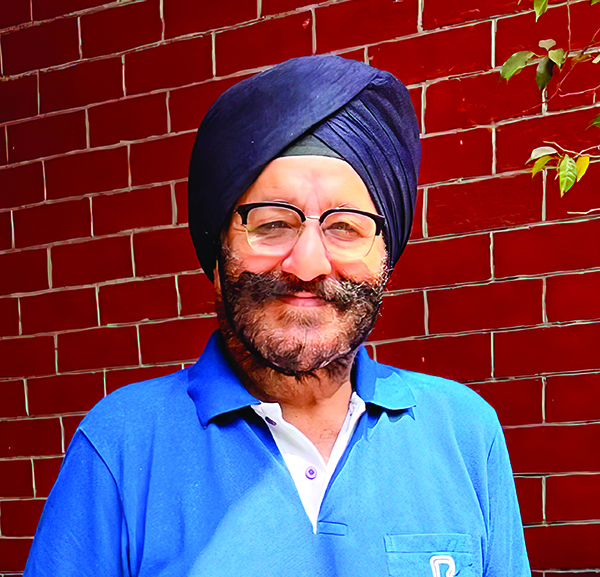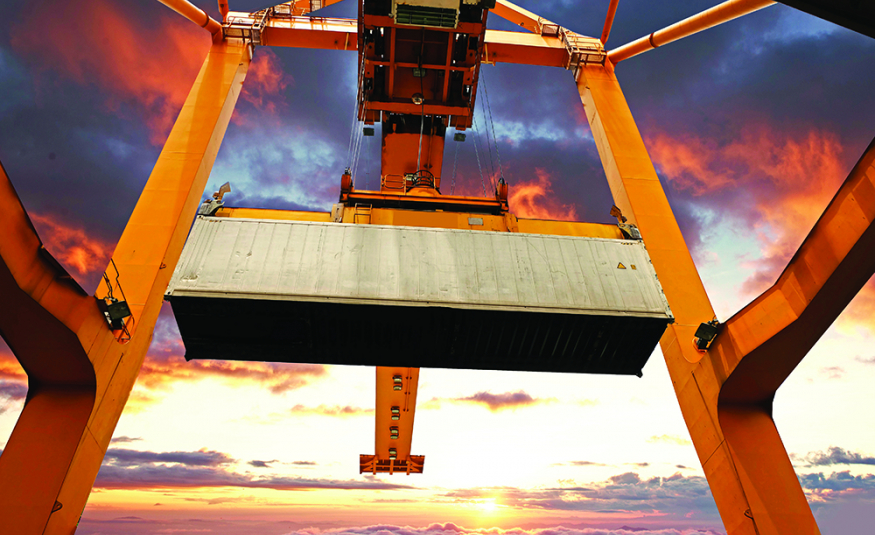EW reporter Catie Owen talks to Ravinder Sethi, R.E. Rogers India’s chairman and managing director, about how the logistics company reinvented itself in the wake of the pandemic
 E. Rogers India, formed in 1986, has over 35 years of providing specialised exhibitions logistics services both in India and abroad. Its range of clients has extended over the private and government sectors, exhibitors, and the centres themselves. But when the Covid-19 pandemic hit and events ground to a halt, for logistics services like Rogers, securing steady revenue seemed somewhat hopeless.
E. Rogers India, formed in 1986, has over 35 years of providing specialised exhibitions logistics services both in India and abroad. Its range of clients has extended over the private and government sectors, exhibitors, and the centres themselves. But when the Covid-19 pandemic hit and events ground to a halt, for logistics services like Rogers, securing steady revenue seemed somewhat hopeless.
Ravinder Sethi (left), Roger’s chairman and managing director, explained to Exhibition World that not only did the company keep its head above water – it developed alternative sources of revenue that are here to stay.
Catie Owen: When events stopped in 2020, how did you secure alternative revenue streams?
Ravinder Sethi: Before the pandemic, 90% of our revenue was through exhibitions, which then became 0%. The aim then was how to get the last 10% and make them revenue generators. What we did was make optimum use of our existing end-to-end supply chain resources, the forklifts, cranes, and all the carriers. We made optimum use of our custom licences.
We responded to the change in the service demand pattern of our new freight customers. This means that we went to our exhibition customers in capital goods, who we were only doing exhibition cargo for, and said: “If you give us your other freight, we will provide you with solutions.” We were very flexible in that way.
CO: What were the biggest challenges to working with international businesses during the pandemic?
RS: One of the main challenges was that it was a new ballgame. Working from home was the norm, but customs never closed. Airports and ports never closed. Because of this, we had to change the mindset of our people. We did this through Zoom calls and training courses on how to approach customers and respond to their needs.
The other challenge was that we had to change the mindset of our partners and explain our new verticals to them. As the people we’d known previously had been made redundant, we had to convince the partners and explore with them the strength of the infrastructure we already had going into the change.
CO: How has the company changed since?
RS: Following the pandemic, there were two things which we wanted to achieve. First, we would remain market leaders in the reopening of the exhibition industry. Alongside this, we would come back in force. Not only did we not make a single person redundant, but we also did not give any salary cuts. Additionally, we have added more manpower to our infrastructure and will not be shuffling our people around.
The biggest change we saw was in our revenue. While we can maintain 90% of exhibition logistics revenue, we aim to change the 90-10 split across our revenue streams to 60-40 due to all the alternative business that we have picked up. With that, we are ensuring that we’re back in the exhibition market with the same gusto as before.
CO: How did Rogers’ data change?
RS: Previously, we only had exhibition data. We had to revisit our database and look at the exhibitors themselves - we had to go to the source. Although we couldn’t go to all 5,000 exhibitors, we focused on those in capital goods. We narrowed the list down to about 500 capital goods exhibitors and then we went into their databases. Our database expanded, as we saw which freight companies these exhibitors were working with.
Then we worked backwards. Business X might be working with the same company for exhibitions in India, but for their general freight they might be working with a general forwarder, use in-house, or they might not be using anybody. In approaching them, we were going to the source to secure revenue.
CO: What Covid-19 precautions did you take on-site, and will you keep them?
RS: When exhibitions reopened, we were able to set the trend in how protocols must be maintained, and we have kept those protocols going. Alongside giving training to our staff, we liaised with our global industry associations.
To maintain these protocols going forwards, we have to go by the law of the land. From country to country, the norms are changing. Some are still maintaining a certain degree of social distancing and other precautions, but widely that’s all disappearing.
However, some of our own protocols are still very strict. To help keep everybody as healthy as possible all of our labour forces and staff are double vaccinated, have had the booster shot, and carry certificates on site. On top of that, we take extra precautions when we notice a regional increase.
CO: What have been some highlights for the company?
RS: In 2021 we managed to break even. But in 2022, we actually saw a profit – which was great! The first thing we did was give increments and bonuses to our staff to boost their morale and say thank you. Additionally, we were able to give them anything outstanding at that moment.
Now, we have new business verticals. We have new offices and there’s a growth pattern to take care of the 10% revenue streams which are becoming 40%. We went through our receivables and cleaned up our accounts. Working from home will also be something we keep on a case-by-case basis; we aren’t going to throw it out.
But overall, our biggest highlight is that Rogers was able to grow over the pandemic.





